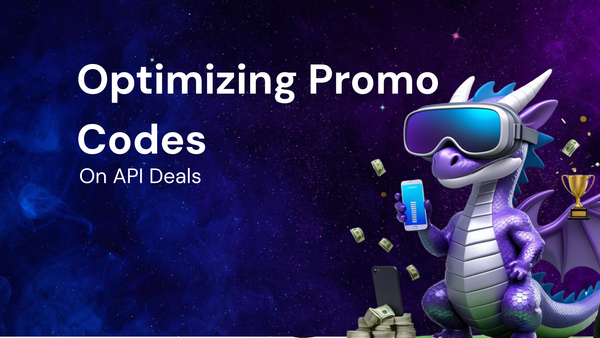E-learning Market Predictions: Key Trends Shaping the Future

E-Learning Market Predictions: Key Trends Shaping the Future
The e-learning market has exploded in recent years, transforming from a niche offering to a dominant force in education and training. Fueled by technological advancements, increasing accessibility, and a growing demand for personalized and flexible learning experiences, the sector is poised for continued expansion and innovation. Understanding the key trends shaping its future is crucial for educators, businesses, and individuals looking to leverage the power of online learning. This blog post delves into the major predictions for the e-learning market, exploring the technological advancements, pedagogical shifts, and evolving user expectations that will define its trajectory.
I. The Meteoric Rise of the E-Learning Market: A Brief Overview
Before diving into the future, it's essential to acknowledge the remarkable growth that has characterized the e-learning market in recent years. This surge has been driven by several factors:
- Increased Internet Penetration and Accessibility: The widespread availability of internet access and affordable devices has made online learning accessible to a wider audience, transcending geographical barriers and socioeconomic limitations.
- Technological Advancements: Innovations in learning management systems (LMS), video conferencing, virtual reality (VR), and artificial intelligence (AI) have enriched the learning experience, making it more engaging, interactive, and personalized.
- Demand for Flexibility and Convenience: E-learning offers unparalleled flexibility, allowing learners to study at their own pace, on their own schedule, and from anywhere in the world. This is particularly appealing to working professionals, students with busy schedules, and individuals seeking to upskill or reskill.
- Cost-Effectiveness: Online learning can be more cost-effective than traditional education, reducing expenses related to travel, accommodation, and physical learning materials.
- The COVID-19 Pandemic: The pandemic served as a catalyst for the e-learning market, forcing educational institutions and businesses to rapidly adopt online learning solutions. This sudden shift accelerated the adoption of e-learning technologies and normalized online learning for a broader audience.
The e-learning market is not just about traditional academic courses. It encompasses corporate training, professional development, personal enrichment, and a wide range of other educational opportunities. This diverse landscape ensures continued growth and evolution as the market adapts to the ever-changing needs of learners and organizations.
II. Key Trends Shaping the Future of E-Learning:
The future of e-learning is not a static landscape. It's a dynamic and evolving ecosystem shaped by a confluence of technological advancements, pedagogical innovations, and changing user expectations. Understanding these key trends is critical for stakeholders who want to remain competitive and leverage the full potential of online learning.
A. Artificial Intelligence (AI) and Machine Learning (ML): The Personalization Revolution:
AI and ML are poised to revolutionize the e-learning experience by enabling personalized learning pathways, intelligent tutoring systems, and automated administrative tasks.
- Personalized Learning Paths: AI algorithms can analyze learner data, including learning styles, strengths, weaknesses, and progress, to create customized learning paths that cater to individual needs. This ensures that learners focus on areas where they need the most support and progress at their own pace.
- Intelligent Tutoring Systems: AI-powered tutors can provide personalized feedback, answer questions, and offer guidance to learners in real-time. These systems can adapt to the learner's skill level and provide customized support, enhancing the learning experience and improving outcomes.
- Automated Assessment and Feedback: AI can automate the grading of assignments, provide instant feedback, and identify areas where learners are struggling. This frees up instructors' time, allowing them to focus on providing personalized support and guidance to students.
- Content Recommendation: AI algorithms can analyze learner preferences and recommend relevant learning resources, ensuring that learners have access to the most valuable and engaging content.
- Predictive Analytics: AI can predict learner performance and identify students who are at risk of failing. This allows instructors to intervene early and provide targeted support to help students succeed.
B. Immersive Technologies: VR, AR, and the Metaverse:
Virtual Reality (VR), Augmented Reality (AR), and the burgeoning metaverse are poised to transform e-learning by creating immersive and engaging learning experiences that simulate real-world scenarios.
- Virtual Reality (VR): VR creates fully immersive digital environments that allow learners to experience realistic simulations of real-world scenarios. This is particularly valuable for training in fields such as medicine, engineering, and aviation, where hands-on experience is crucial. Imagine medical students performing virtual surgeries, engineers designing virtual prototypes, or pilots practicing emergency procedures in a simulated cockpit.
- Augmented Reality (AR): AR overlays digital information onto the real world, enhancing the learning experience by providing contextual information and interactive elements. For example, students studying anatomy could use AR to visualize the human body in 3D, or history students could explore ancient ruins through an AR app.
- The Metaverse: The metaverse, a persistent and shared virtual world, offers the potential to create collaborative and immersive learning environments where learners can interact with each other and with instructors in real-time. Imagine attending a virtual lecture in a shared virtual classroom, collaborating on a project with classmates from around the world, or exploring a virtual museum together.
C. Microlearning: Bite-Sized Learning for Busy Schedules:
Microlearning, which involves delivering learning content in short, focused bursts, is gaining popularity due to its effectiveness and convenience.
- Enhanced Retention: Microlearning modules are designed to be easily digestible, improving retention and knowledge transfer.
- Increased Engagement: Short, interactive modules keep learners engaged and motivated.
- Flexibility and Convenience: Microlearning modules can be accessed on any device, at any time, making them ideal for learners with busy schedules.
- Targeted Learning: Microlearning allows learners to focus on specific skills or knowledge gaps, making learning more efficient and effective.
- Just-in-Time Learning: Microlearning modules can provide learners with the information they need exactly when they need it, supporting on-the-job learning and performance improvement.
D. Mobile Learning (M-Learning): Learning on the Go:
Mobile learning, which leverages the power of smartphones and tablets to deliver learning content, is becoming increasingly prevalent as learners demand access to learning resources anytime, anywhere.
- Accessibility and Convenience: M-learning allows learners to access learning content on the go, making it ideal for busy professionals and students who are constantly on the move.
- Personalized Learning: Mobile devices can track learner progress and provide personalized feedback, enhancing the learning experience.
- Gamification: M-learning apps can incorporate gamification elements, such as points, badges, and leaderboards, to make learning more engaging and motivating.
- Social Learning: Mobile learning platforms can facilitate social learning by allowing learners to connect with each other, share ideas, and collaborate on projects.
- Offline Access: Many m-learning apps offer offline access to learning content, allowing learners to study even when they don't have an internet connection.
E. Gamification: Making Learning Fun and Engaging:
Gamification, the use of game-like elements in non-game contexts, is transforming e-learning by making it more engaging, motivating, and effective.
- Increased Motivation: Gamification elements such as points, badges, leaderboards, and challenges can motivate learners to complete learning activities and achieve their goals.
- Enhanced Engagement: Gamified learning experiences are more engaging and interactive, keeping learners focused and motivated.
- Improved Retention: Gamification can improve retention by making learning more memorable and enjoyable.
- Skill Development: Gamified learning activities can help learners develop a variety of skills, such as problem-solving, critical thinking, and collaboration.
- Real-World Application: Gamification can help learners apply their knowledge and skills to real-world scenarios, making learning more relevant and practical.
F. Personalized Learning Paths and Adaptive Learning:
Moving beyond generic courses, e-learning is embracing personalized learning paths and adaptive learning technologies that cater to individual learner needs and learning styles.
- Adaptive Learning Platforms: These platforms use algorithms to assess learner knowledge and adjust the difficulty of the learning content accordingly.
- Personalized Content Recommendations: Learners receive recommendations for learning resources that are tailored to their interests and learning goals.
- Customized Learning Paths: Learners can choose learning paths that align with their career aspirations and personal interests.
- Data-Driven Insights: Instructors can use data analytics to identify learners who are struggling and provide targeted support.
- Increased Learner Autonomy: Learners have more control over their learning experience, allowing them to learn at their own pace and in their own way.
G. Blockchain Technology: Secure and Verifiable Credentials:
Blockchain technology is emerging as a potential solution for securing and verifying educational credentials, addressing concerns about fraud and ensuring the authenticity of online certifications.
- Secure Storage of Credentials: Blockchain provides a secure and immutable ledger for storing educational credentials.
- Verifiable Credentials: Employers can easily verify the authenticity of credentials stored on the blockchain.
- Reduced Fraud: Blockchain technology can help to prevent fraud by making it more difficult to counterfeit educational credentials.
- Increased Transparency: Blockchain provides a transparent and auditable record of educational achievements.
- Learner Ownership: Learners have greater control over their educational credentials and can easily share them with employers.
H. Focus on Skills-Based Learning and Competency-Based Education:
The emphasis is shifting from traditional degree-based education to skills-based learning and competency-based education, focusing on the acquisition of specific skills and competencies that are relevant to the workplace.
- Skills Gap: Employers are increasingly looking for candidates with specific skills and competencies, rather than just degrees.
- Competency-Based Education: This approach focuses on demonstrating mastery of specific skills and competencies, rather than just completing coursework.
- Micro-Credentials: These are short, focused certifications that validate specific skills and competencies.
- Personalized Learning Paths: Learners can choose learning paths that align with their career goals and the skills they need to succeed.
- Career Advancement: Skills-based learning and competency-based education can help learners to advance their careers and earn higher salaries.
III. Challenges and Opportunities in the E-Learning Market:
While the e-learning market is poised for continued growth, it also faces several challenges and opportunities.
A. Challenges:
- Digital Divide: Ensuring equitable access to technology and internet connectivity for all learners remains a significant challenge.
- Quality Assurance: Maintaining the quality and credibility of online learning programs is crucial.
- Learner Engagement and Motivation: Keeping learners engaged and motivated in an online environment can be challenging.
- Data Privacy and Security: Protecting learner data and ensuring the security of online learning platforms is essential.
- Integration with Traditional Education: Seamlessly integrating e-learning with traditional education models is a key challenge for educational institutions.
B. Opportunities:
- Expanding Access to Education: E-learning can democratize access to education, making it available to learners in remote areas and those who cannot afford traditional education.
- Personalized Learning Experiences: E-learning provides the opportunity to create personalized learning experiences that cater to individual learner needs and learning styles.
- Lifelong Learning: E-learning can support lifelong learning by providing learners with access to a wide range of educational resources and opportunities.
- Corporate Training and Development: E-learning can be used to train and develop employees, improving their skills and productivity.
- Innovation in Pedagogy: E-learning can foster innovation in pedagogy, leading to more engaging and effective learning experiences.
IV. Conclusion: Embracing the Future of Learning
The e-learning market is undergoing a period of rapid transformation, driven by technological advancements, pedagogical innovations, and evolving user expectations. The trends outlined in this blog post – AI and ML, immersive technologies, microlearning, mobile learning, gamification, personalized learning, blockchain, and skills-based learning – represent the key forces shaping the future of online education and training.
By embracing these trends and addressing the associated challenges, educators, businesses, and individuals can unlock the full potential of e-learning to create more accessible, engaging, and effective learning experiences. The future of learning is online, personalized, and continuously evolving, and those who embrace this change will be best positioned to thrive in the digital age. The key is to remain adaptable, embrace innovation, and prioritize the needs of the learner to create a truly transformative learning experience.




